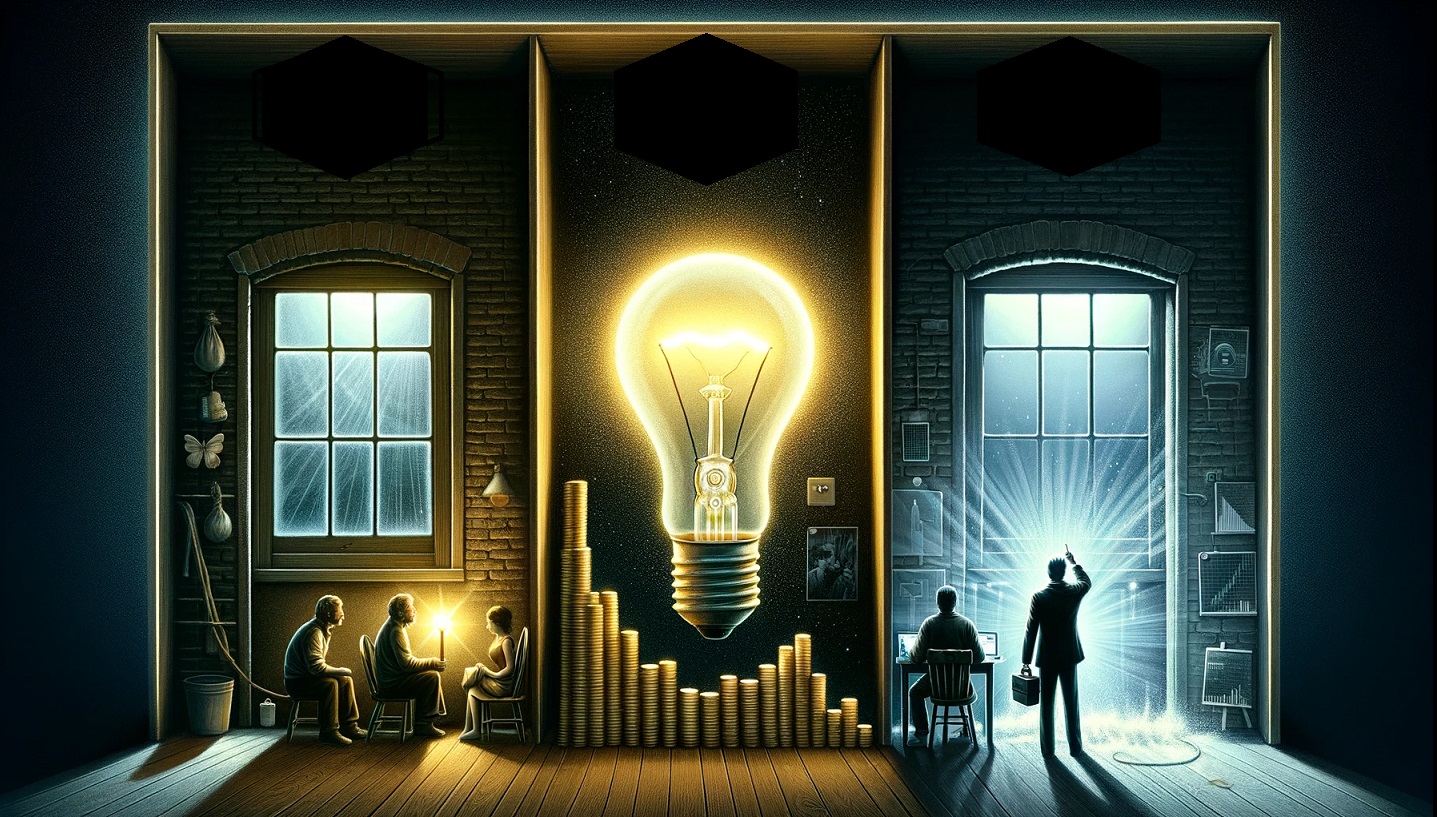Innovation, much like crafting a good story, boils down to understanding three key elements: who it’s for, what it does, and how it makes a difference.
“Who” (has a problem and what that problem is): Uncovering Unmet Needs
Imagine walking through a town where everyone still uses candles to see at night. You notice how the flickering light struggles to push away the darkness, how people strain their eyes, and how often they must replace these candles. This observation reveals a problem, an unmet need for better lighting.
Identifying who has a problem and what that problem is forms the foundation of innovation. It’s about seeing the world through the eyes of those living in it, understanding their challenges, and recognizing opportunities for improvement.
“What” (will work, to solve the problem or to fulfil the unmet need): Crafting a Solution
Now, consider you’ve found a way to make a small, bright light that doesn’t burn out like a candle. This is your “what.” But it’s not enough to merely have a bright idea; the solution must work well and be practical. Thomas Edison, for example, didn’t just stop at imagining a world lit by electric light; he created the light bulb—a practical, durable source of light that outshone candles and gas lamps. Your solution must be compelling enough to draw people away from their old habits and convince them to try something new.
“How” (will the solution create value for the inventor and the user): Making It Viable
The brilliance of an invention is not just in its creation but in making it accessible to many. This is the “how.” Edison didn’t just invent the light bulb; he also figured out how to mass-produce it and make it affordable. He thought about how to get it into as many homes as possible, crafting a business model that allowed people to buy his bulbs and use them easily. This element involves thinking about how the solution will create value, not just for the customer but also as a sustainable business. It’s about monetizing the innovation in a way that benefits both the inventor and the user.
Bringing It All Together
Successful innovation happens at the crossroads of understanding a need, devising a solution, and making it economically viable. It’s like writing a story where you know your audience (the “who”), have a compelling narrative (the “what”), and a means to share it with the world (the “how”). Edison’s light bulb wasn’t just a stroke of genius in invention; it was a masterclass in understanding the market, creating a product, and delivering it through a sustainable business model.
As we look at innovation through this lens, it reminds us that true breakthroughs are not just about bright ideas. They’re about seeing a need, filling it with a practical solution, and doing so in a way that makes sense not just technically, but also economically. So, when thinking about innovation, remember to consider not just the light bulb, but also how to light up the world with it.



